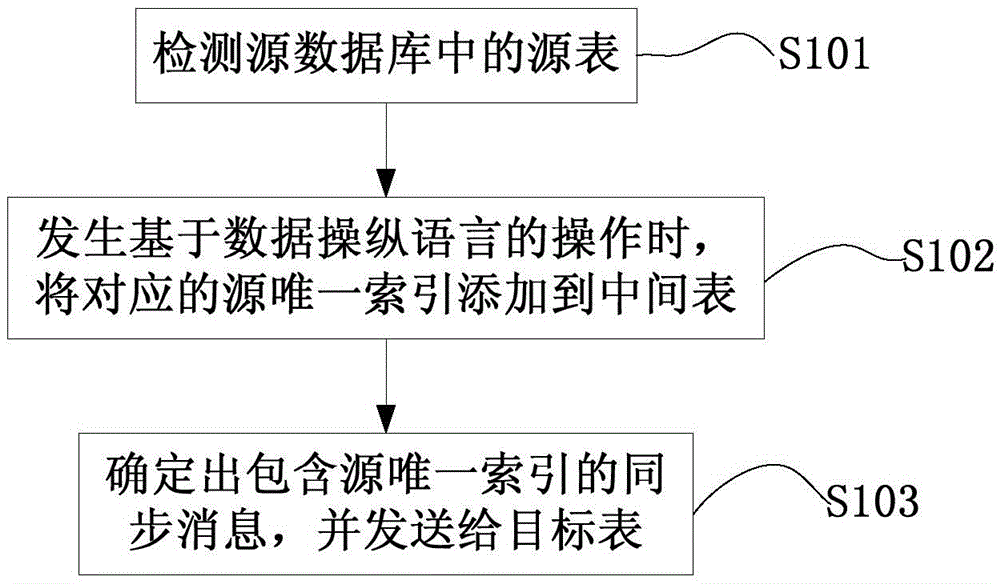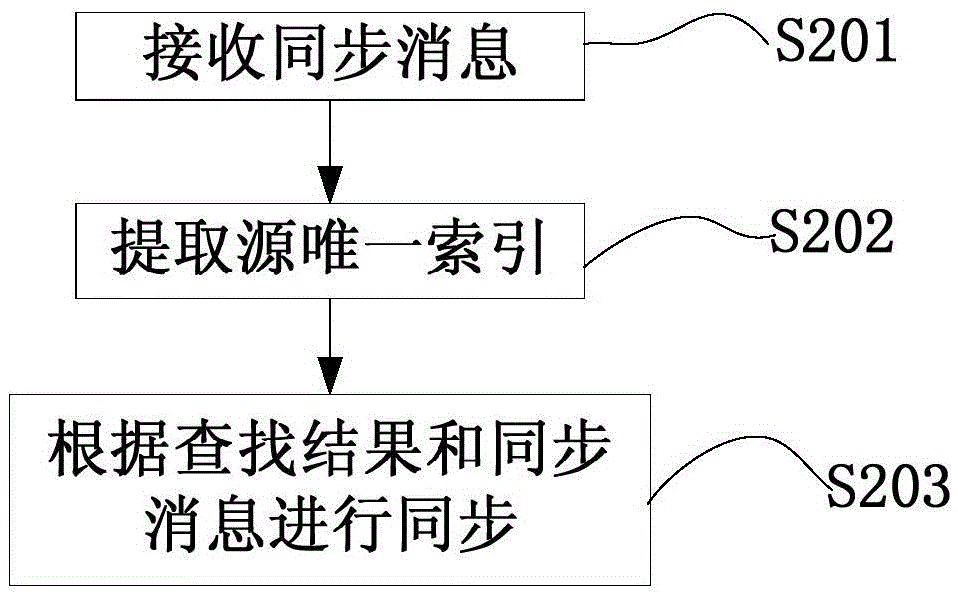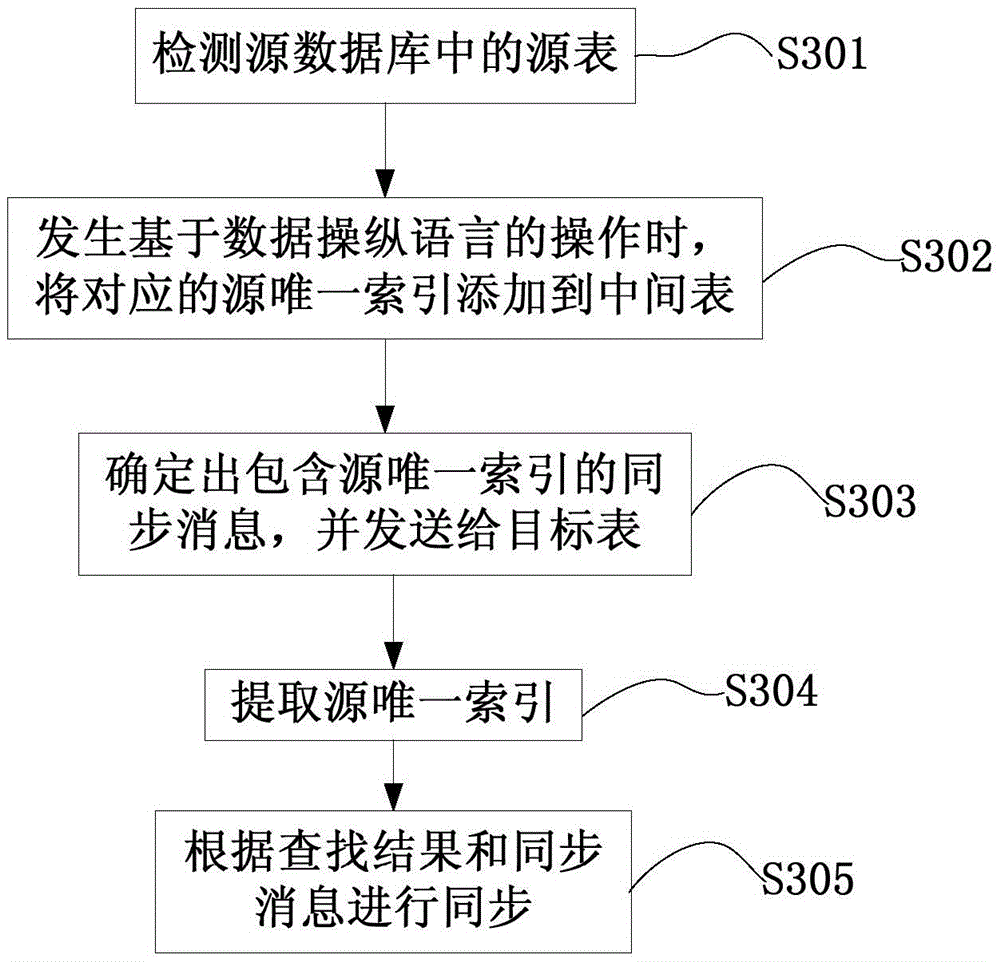Database synchronization method and system, source data and target data synchronization device
A technology for synchronizing devices and target data, which is applied in the database field, can solve problems such as poor database performance and limited disk space, and achieve the effect of ensuring performance and saving disk space
- Summary
- Abstract
- Description
- Claims
- Application Information
AI Technical Summary
Problems solved by technology
Method used
Image
Examples
Embodiment 1
[0066] This embodiment provides a database synchronization method, such as figure 1 shown, please refer to figure 1 :
[0067] S101. Monitor the source table in the source database;
[0068] S102. When it is detected that a certain part of the source data in the source table is operated based on DML (Data Manipulation Language, Data Manipulation Language), add the source unique index corresponding to this part of the source data to the intermediate table corresponding to the source table;
[0069] S103. After the first synchronization condition is satisfied, determine the source data to be synchronized in the source table according to the source unique index in the intermediate table, and send a message containing at least the source unique index corresponding to the source data to be synchronized to the corresponding target table in the target database Synchronize messages.
[0070] Wherein, when detecting in step S102 that a certain part of the source data in the source t...
Embodiment 2
[0075] This embodiment provides a database synchronization method, such as figure 2 shown, please refer to figure 2 :
[0076] S201. Receive a synchronization message from a source table in the source database, where the synchronization message at least includes a source unique index corresponding to the source data to be synchronized where the operation based on the data manipulation language occurs;
[0077] Wherein, the synchronization message is consistent with the synchronization message in Embodiment 1, and will not be repeated here.
[0078] S202. Extract the source unique index from the synchronization message;
[0079] S203. Search for the corresponding target unique index in the corresponding target table of the target library according to the source unique index, and perform a synchronization operation according to the search result and the synchronization message.
[0080] In step S202, extracting the source unique index from the synchronization message means ...
Embodiment 3
[0082] This embodiment provides a database synchronization method, such as image 3 shown, please refer to image 3 :
[0083] S301. Monitor the data of the source table in the source database;
[0084] S302. When it is detected that a part of the source data in the source table is operated based on the data manipulation language, add the source unique index corresponding to this part of the source data to the intermediate table corresponding to the source table;
[0085] S303. After the first synchronization condition is satisfied, determine the source data to be synchronized in the source table according to the source unique index in the intermediate table, and send a message containing at least the source unique index corresponding to the source data to be synchronized to the corresponding target table in the target database synchronization message;
[0086] S304. Extract the source unique index from the synchronization message;
[0087] S305. Search the target table fo...
PUM
 Login to View More
Login to View More Abstract
Description
Claims
Application Information
 Login to View More
Login to View More - R&D
- Intellectual Property
- Life Sciences
- Materials
- Tech Scout
- Unparalleled Data Quality
- Higher Quality Content
- 60% Fewer Hallucinations
Browse by: Latest US Patents, China's latest patents, Technical Efficacy Thesaurus, Application Domain, Technology Topic, Popular Technical Reports.
© 2025 PatSnap. All rights reserved.Legal|Privacy policy|Modern Slavery Act Transparency Statement|Sitemap|About US| Contact US: help@patsnap.com



